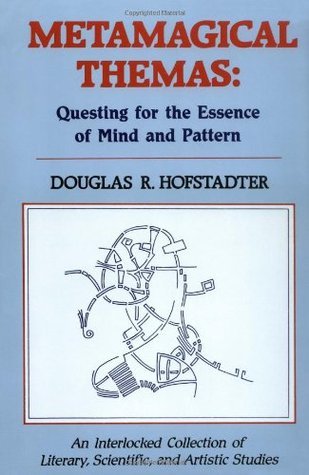
Gödel, Escher, Bach: An Eternal Golden Braid
Book Description
Three brilliant minds — a logician, an artist, and a composer — intertwine across the realms of mathematics, music, and art in a dazzling exploration of human thought. Each page spirals deeper into the mysteries of consciousness and the paradox of self-reference, crafting a symphonic dialogue that transcends disciplines. Ideas dance like notes in Bach's fugues, while Gödel's theorems unravel the very fabric of truth. Escher’s mesmerizing visuals challenge perception itself. With intellect as the pulse and creativity as the heartbeat, this journey invites readers to ponder: What does it mean to be truly aware?
Quick Book Summary
"Gödel, Escher, Bach: An Eternal Golden Braid" is an exploration of self-reference, formal systems, and the nature of consciousness, weaving together mathematics, art, and music. Hofstadter uses the lives and works of logician Kurt Gödel, artist M. C. Escher, and composer Johann Sebastian Bach as case studies in how complex patterns and paradoxes emerge from simple rules. The book delves into how systems—even as simple as those found in mathematics or as rich as those in music or visual art—can give rise to profound questions about self-awareness and intelligence. Through playful dialogues, puzzles, and analogies, the text invites the reader to ponder mind, meaning, and the limits of formal reasoning.
Summary of Key Ideas
Table of Contents
Self-Reference and Paradox
Hofstadter places self-reference and paradox at the heart of his inquiry, introducing the concept through Gödel's Incompleteness Theorems. These theorems demonstrate that even the most rigorous mathematical systems contain true statements that cannot be proven within those systems, revealing intrinsic limitations. The discussion extends this self-referential loop to language, music, and art, showing how these domains grapple with similar paradoxes and how self-reference can yield both beauty and complexity.
Formal Systems and Incompleteness
The exploration of formal systems highlights both their power and their constraints. By drawing parallels between the structure of Euclidean geometry, computer programming languages, and musical composition, Hofstadter illustrates how systems governed by explicit rules can produce a vast range of outputs. However, Gödel’s work reveals that no matter how carefully such systems are constructed, there will always be truths that transcend their confines—hinting at the elusiveness of absolute understanding.
Interdisciplinary Connections
A central strength of the book is its ability to weave together mathematics, art, and music. Escher’s drawings visually embody impossible realities; Bach’s fugues musically enact recursive patterns and nested structures; while Gödel’s logic exposes the limits of rational frameworks. Through analogies, puzzles, and dialogues (especially those between Achilles and the Tortoise), Hofstadter shows the interplay between these fields, blurring boundaries and demonstrating that fundamental patterns repeat across disciplines.
Recursion and Strange Loops
Recursion and strange loops emerge as motifs throughout. Recursion, where a system refers to itself in its own definition, becomes a bridge between the disciplines. Escher’s hands drawing each other, or Bach’s endlessly rising canons, serve as tangible examples. These “strange loops” are more than curiosities—they are central to understanding systems capable of self-reflection, suggesting the very mechanism by which mind and meaning arise from inert components.
The Nature of Consciousness
Ultimately, Hofstadter ties these threads together in a meditation on consciousness. By examining the emergence of meaning from meaningless symbols, and the leap from rigid rules to fluid understanding, he frames human cognition as a strange loop: a self-referential structure arising from simpler elements. The book closes with the probing question of what it means to be “aware”—inviting readers to contemplate whether self-consciousness is a mere byproduct of complexity, or something fundamentally mysterious.
Download This Summary
Get a free PDF of this summary instantly — no email required.





